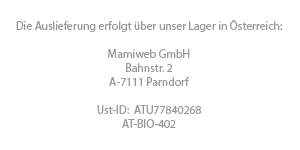
- Effects of Haritaki
- Wound-healing
Positive effect of Haritaki on wound healing
Terminalia Chebula: Wound healing
Scientific experiments and studies on the positive effect of Haritaki on wound healing.
The results of this study show that T. chebula extract can accelerate wound healing in rats by wound contraction and has a more positive effect than SSD 1% cream in the treatment of burns.
Haritaki - according to the study results - can be used as a bioactive component for wound healing by increasing cell proliferation and decreasing free radical production without affecting the normal cell matrix.
The effect of Terminalia chebula extract vs. silver sulfadiazine on burn wounds in rats
Journal of Complementary and Integrative Medicine 2015 Jun;12(2):127-35. doi: 10.1515/jcim-2014-0068.Five groups of ten rats were burned with hot water. Animals were administrated with topical cream at control, normal saline, 5%, 10% T. chebula extracts and standard SSD creams. Several parameters were assessed, including wound area, visual inspection of wound, bacteriology assessment, percentage of wound contraction and histopathological examination. Results: The average area of wound on 10th day was 11.2 ± 3.3, 11 ± 3.2, 8.5 ± 2.3, 9.5 ± 4.2 and 5.1 ± 2.2 cm(2) for SSD1%, base cream, normal saline, herbal extract 5% and 10%, respectively. T. chebula 10% cream exhibited lower wound size than SSD1% and control groups at 10th day post burn injury. On day 15, the percentage of wound contraction in T. chebula was 5% and 10% more than 18% and 53% in comparison to SSD1% group, respectively. Histopathological results exhibited well-formed horizontally oriented collagen fibers for appropriate tension. Strength of scar on burned tissue was better in T. chebula 5% and 10% as compared with control and SSD groups. Conclusions: The results of this study showed that T. chebula extract was capable of accelerating wound healing in rats by wound contraction, and had beneficial effects more than SSD 1% cream in the management of burn injury.
[Link to the scientific study]Effect of Extracts of Terminalia chebula on Proliferation of Keratinocytes and Fibroblasts Cells: An Alternative Approach for Wound Healing
Evidence Based Complementary and Alternative Medicine 2014;2014:701656. doi: 10.1155/2014/701656. Epub 2014 Feb 26.Terminalia chebula is one of the traditional medicines used in the treatment of many diseases. In the present work, different concentrations of various organic and aqueous extracts (solvent-free) of T. chebula were tested on fibroblast (L929) and keratinocytes cells to evaluate its biocompatible concentration by using MTT and live-dead viability/cytotoxic assay. These extracts were found to be effective in decreasing the ammonia accumulation in the media, thereby reducing its toxic effect on cells. DPPH assay further confirmed the free-radical scavenging ability of the extracts which increased with the increase in concentration of each extract. Cell proliferation/apoptosis, cytoskeletal structure, and ECM production were further evaluated by live-dead assay and phalloidin/cytokeratin staining, respectively. The cytoskeletal structure and ECM secretion of the cells treated with extracts showed higher cellular activity in comparison to control. In conclusion, we have demonstrated the effect of these extracts of T. chebula on both types of skin cells and optimized concentration in which it could be used as a bioactive component for wound healing applications by increasing cell proliferation and decreasing free-radical production without affecting the normal cellular matrix. It can also find applications in other therapeutics applications where ammonia toxicity is a limiting factor.
[Link to the scientific study]



